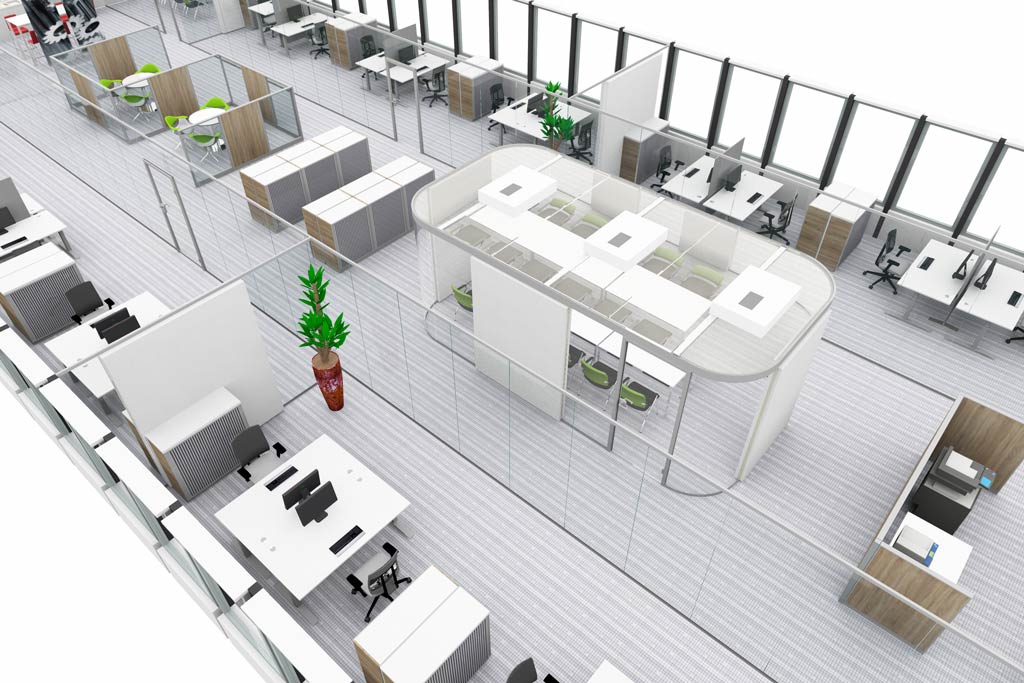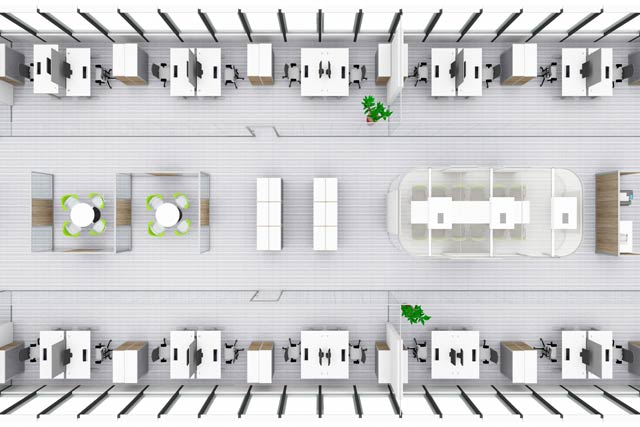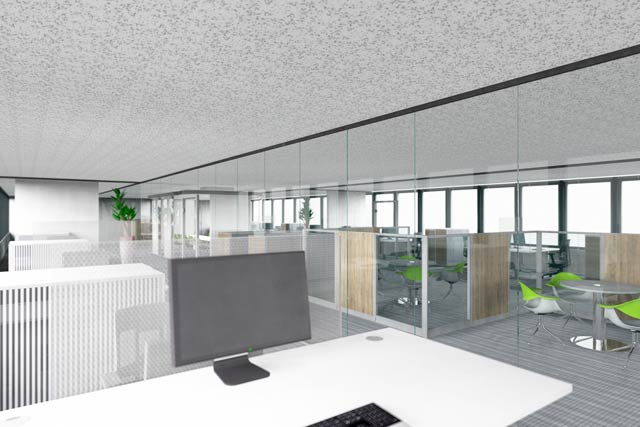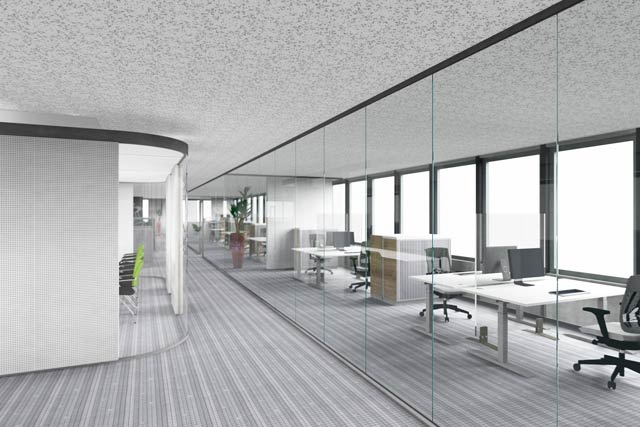
Group office
The group office creates team zones behind floor-to-ceiling hallway walls. Four or more workstations are combined in one room. Room sizes are adjusted to the team sizes. Conversely, this also means that these walls must be easily changeable to accommodate changing team strengths. Current forms of group offices often use glass walls to increase transparency and optimize communication. The aim is to bring the advantages of the open space into the house and at the same time shield from disruptive influences from the lively central zone.
Setting up a combination zone is also an option here
At this point it is noticeable that modern interpretations, whatever the shape of the office space, create central zones based on the model of the combination office. Of course, this doesn't always have to be as generous as shown here. For higher densities, the middle zone will be at least partially reduced to a hallway and workplaces will be set up in a second row. Nevertheless, just as a market square forms the socio-cultural center of every town, such a zone belongs in a modern office world. Teams can communicate undisturbed. There are good conditions for team spirit and teamwork. The workplace itself, however, offers moderate opportunities for retreat. The group office is particularly problematic acoustically. The team rooms are usually not large enough to generate a self-generated background noise (noise of the employees working). The double provision of transport routes has a negative impact on land use.




